Abstract
Models with experimentally induced pain in healthy man might be useful for the screening for analgesic effects of new drugs. Experimental pain models have been shown to discriminate reliably between the effects of opioid analgesics and placebo but their sensitivity to nonsteroidal anti-inflammatory agents is disputed. This study investigated whether it would be possible by using electrically and thermally induced cutaneous pain to discriminate reliably the effects of single oral doses of 75 and 150 mg diclofenac sodium on the one hand and 60 mg codeine on the other from those of placebo. Forty-eight healthy subjects participated each in four experiments in which they received, in random double-blind fashion, each of the treatments. Every experiment comprised eight series of measurements, two before and six after drug administration, carried out at 30 min intervals. Diclofenac sodium produced significant dose-related increases of threshold and tolerance to electrically and threshold to thermally induced pain. Codeine 60 mg was significantly superior to placebo in all pain measures. Its analgesic effects were stronger than those of diclofenac 75 mg but weaker than those of diclofenac 150 mg. Neither 150 mg nor 75 mg diclofenac caused more side effects than placebo, whereas codeine 60 mg elicited a high frequency of side effects. No severe adverse effects occurred after any one treatment. The results suggest that both electrically and thermally induced cutaneous pain are well suited to evaluate analgesic effects not only of opioids but also of nonsteroidal anti-inflammatory drugs.
Full text
PDF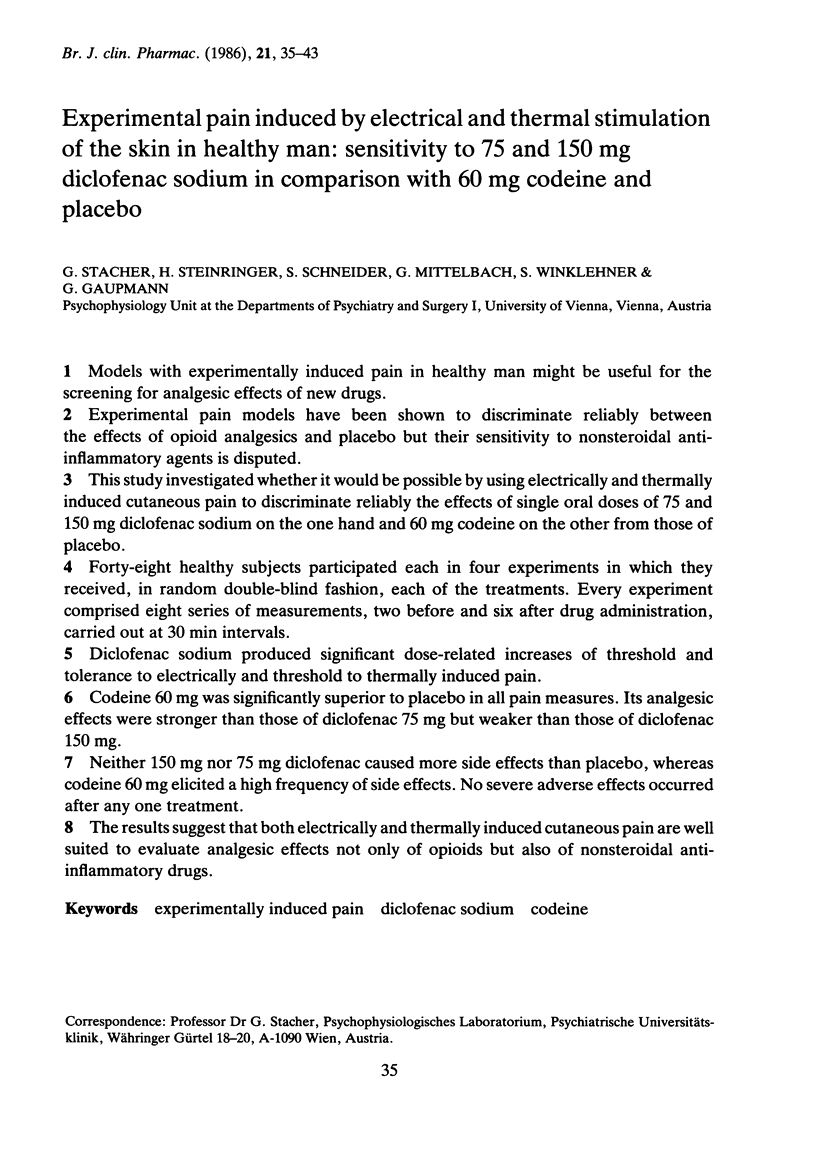
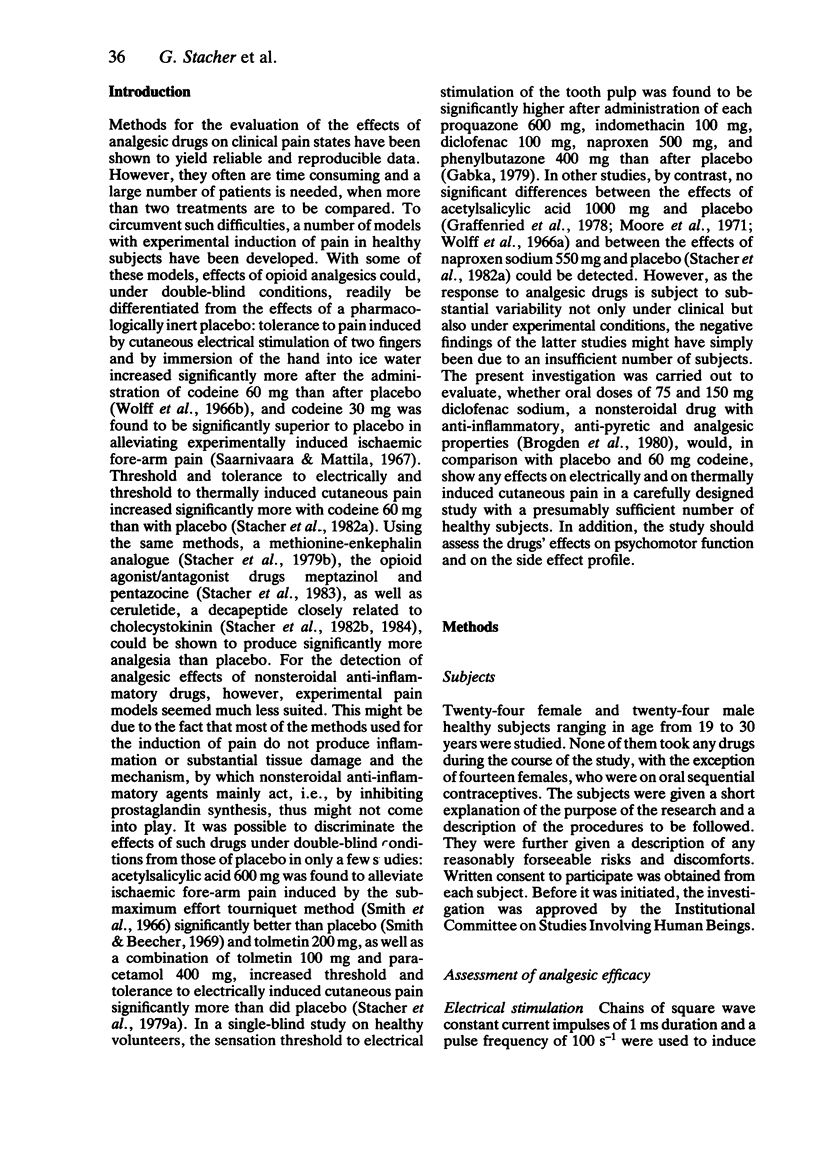
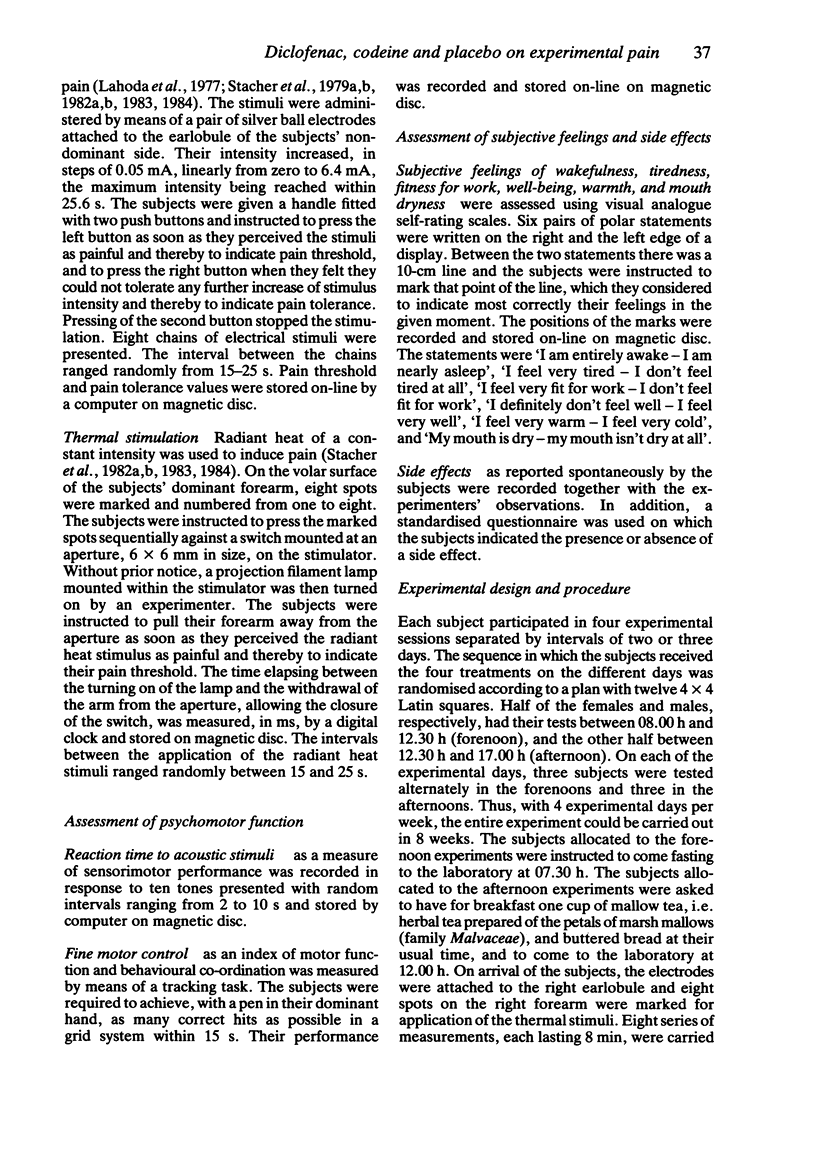
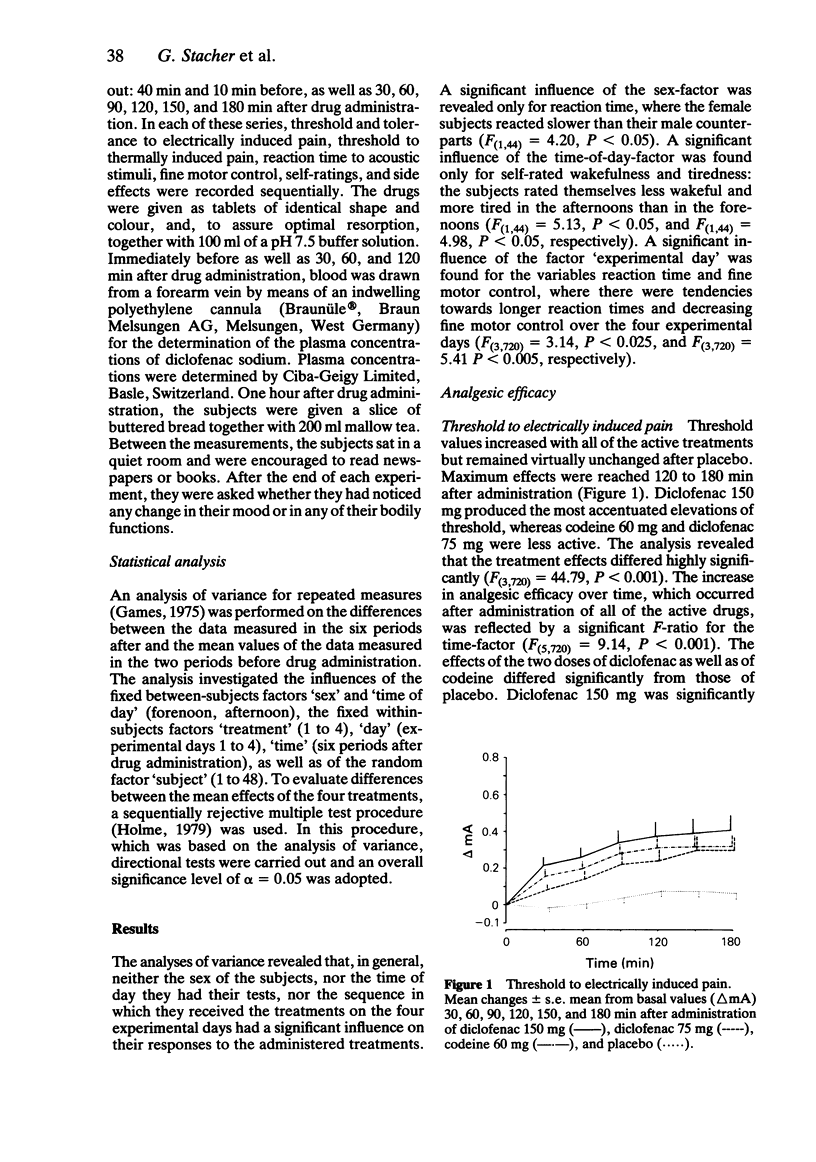
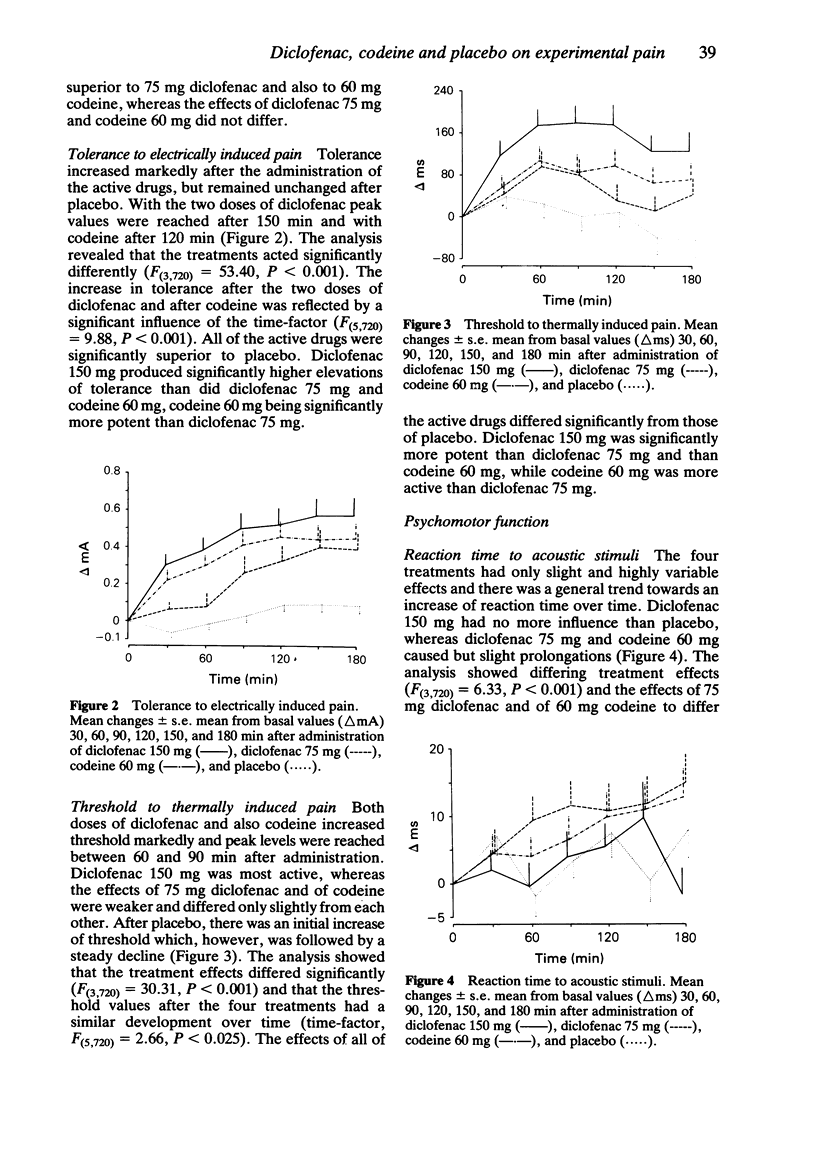
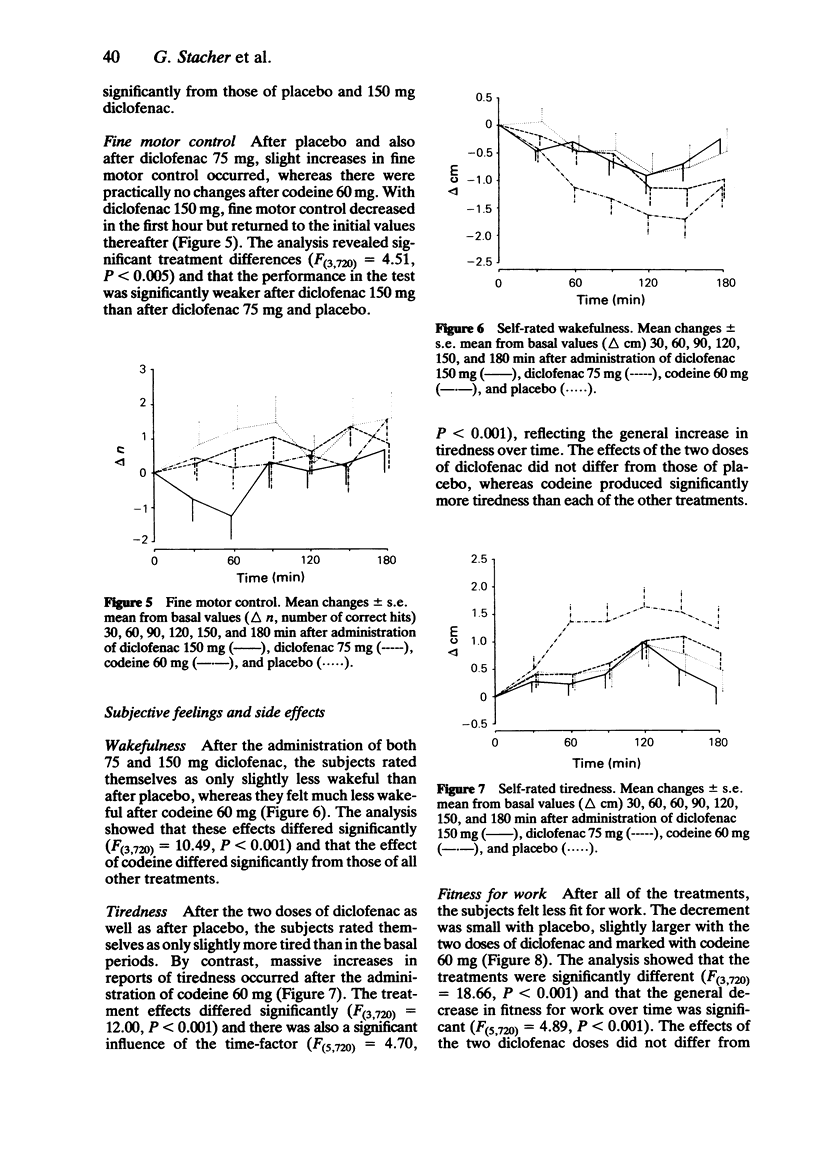
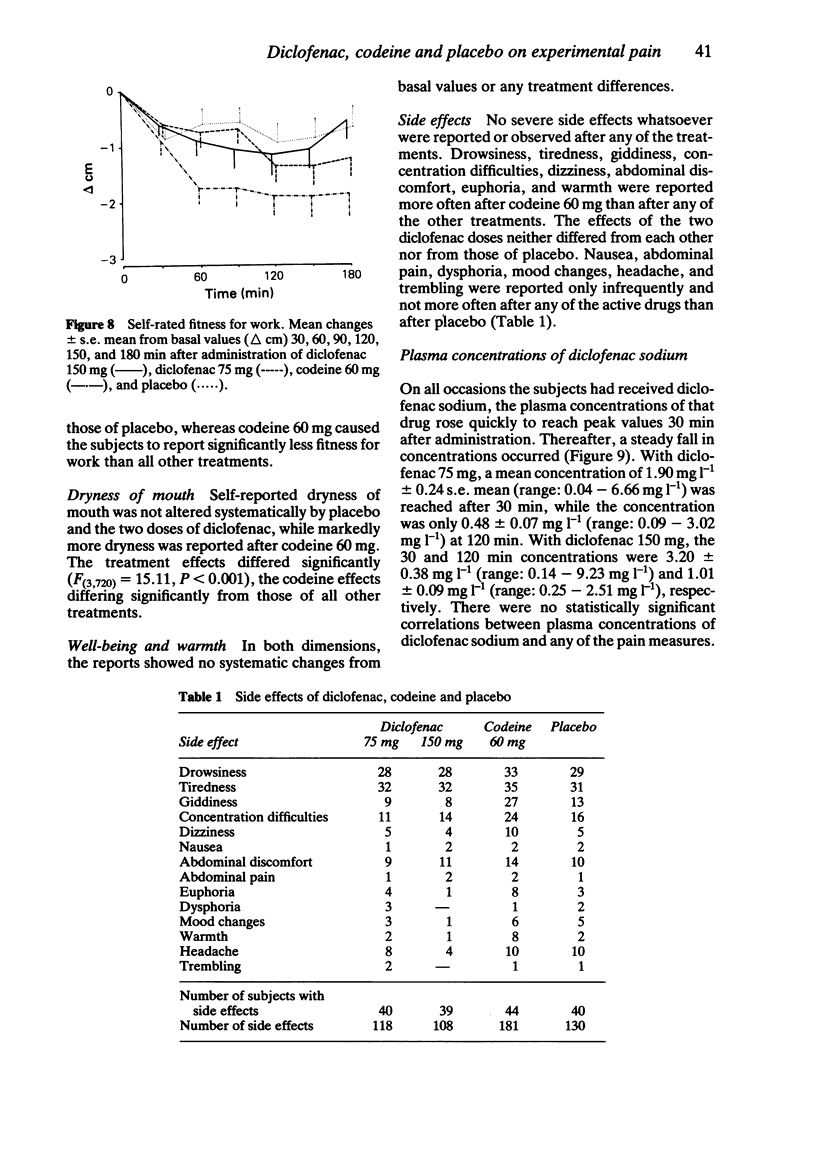
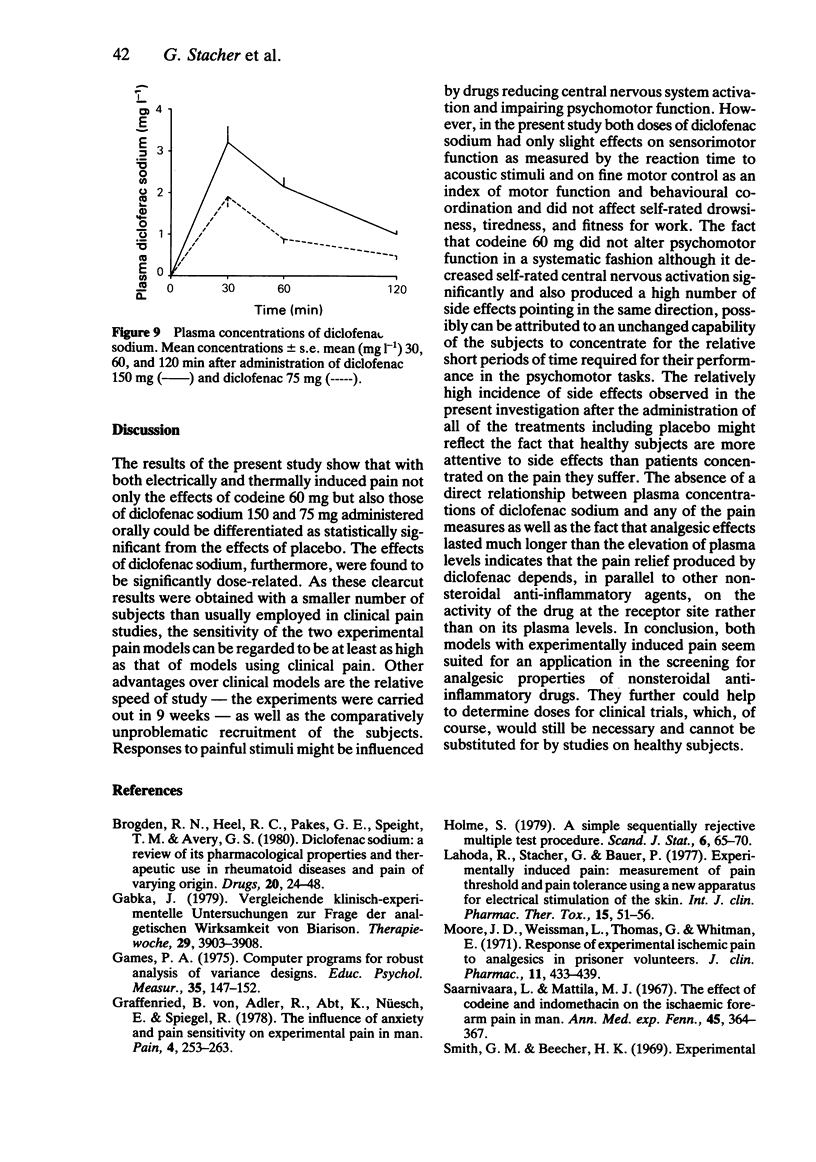
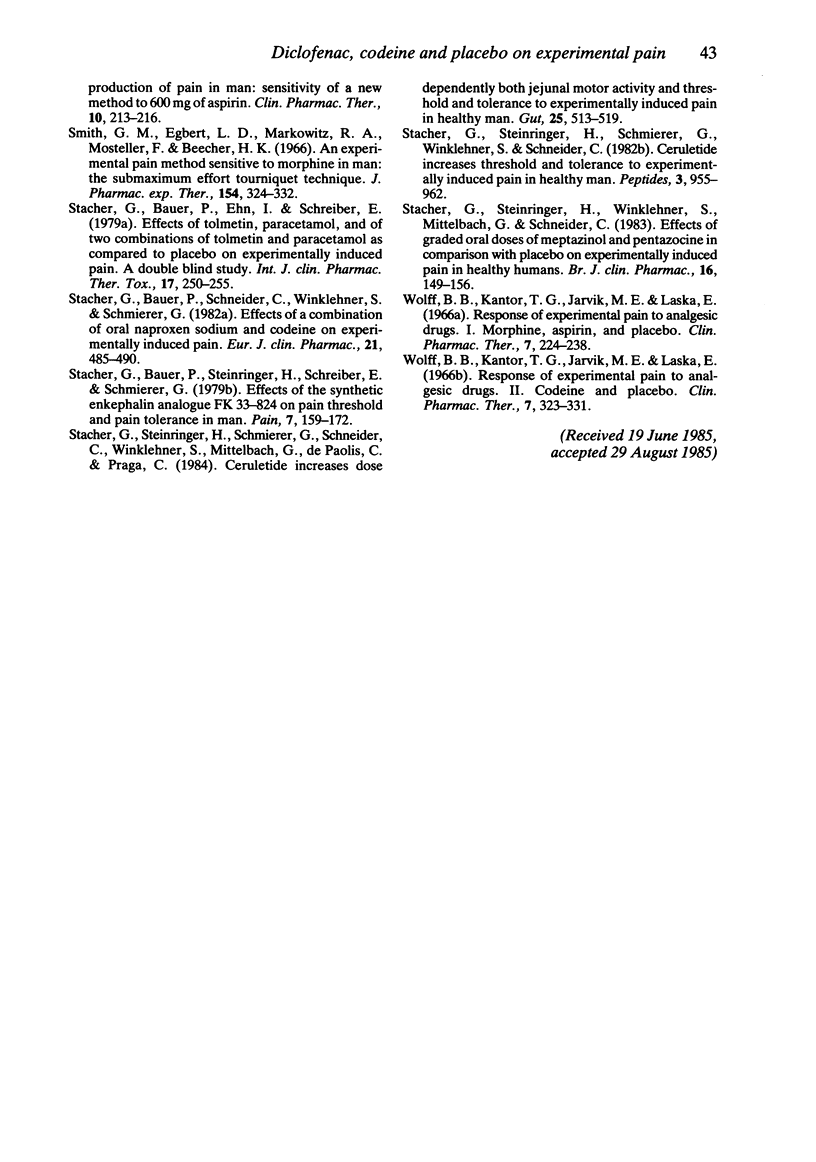
Selected References
These references are in PubMed. This may not be the complete list of references from this article.
- Brogden R. N., Heel R. C., Pakes G. E., Speight T. M., Avery G. S. Diclofenac sodium: a review of its pharmacological properties and therapeutic use in rheumatic diseases and pain of varying origin. Drugs. 1980 Jul;20(1):24–48. doi: 10.2165/00003495-198020010-00002. [DOI] [PubMed] [Google Scholar]
- Lahoda R., Stacher G., Bauer P. Experimentally induced pain: measurement of pain threshold and pain tolerance using a new apparatus for electrical stimulation of the skin. Int J Clin Pharmacol Biopharm. 1977 Feb;15(2):51–56. [PubMed] [Google Scholar]
- Moore J. D., Weissman L., Thomas G., Whitman E. N. Response of experimental ischemic pain to analgesics in prisoner volunteers. J Clin Pharmacol New Drugs. 1971 Nov-Dec;11(6):433–439. [PubMed] [Google Scholar]
- Saarnivaara L., Mattila M. J. The effect of codeine and indomethacin on the ischaemic forearm pain in man. Ann Med Exp Biol Fenn. 1967;45(3):364–367. [PubMed] [Google Scholar]
- Smith G. M., Beecher H. K. Experimental production of pain in man: sensitivity of a new method to 600 mg. of aspirin. Clin Pharmacol Ther. 1969 Mar-Apr;10(2):213–216. doi: 10.1002/cpt1969102213. [DOI] [PubMed] [Google Scholar]
- Smith G. M., Egbert L. D., Markowitz R. A., Mosteller F., Beecher H. K. An experimental pain method sensitive to morphine in man: the submaximum effort tourniquet technique. J Pharmacol Exp Ther. 1966 Nov;154(2):324–332. [PubMed] [Google Scholar]
- Stacher G., Bauer P., Ehn I., Schreiber E. Effects of tolmetin, paracetamol, and of two combinations of tolmetin and paracetamol as compared to placebo on experimentally induced pain. A double blind study. Int J Clin Pharmacol Biopharm. 1979 Jun;17(6):250–255. [PubMed] [Google Scholar]
- Stacher G., Bauer P., Schneider C., Winklehner S., Schmierer G. Effects of a combination of oral naproxen sodium and codeine on experimentally induced pain. Eur J Clin Pharmacol. 1982;21(6):485–490. doi: 10.1007/BF00542043. [DOI] [PubMed] [Google Scholar]
- Stacher G., Bauer P., Steinringer H., Schreiber E., Schmierer G. Effects of the synthetic enkephalin analogue FK 33-824 on pain threshold and pain tolerance in man. Pain. 1979 Oct;7(2):159–172. doi: 10.1016/0304-3959(79)90007-1. [DOI] [PubMed] [Google Scholar]
- Stacher G., Steinringer H., Schmierer G., Schneider C., Winklehner S., Mittelbach G., De Paolis C., Praga C. Ceruletide increases dose dependently both jejunal motor activity and threshold and tolerance to experimentally induced pain in healthy man. Gut. 1984 May;25(5):513–519. doi: 10.1136/gut.25.5.513. [DOI] [PMC free article] [PubMed] [Google Scholar]
- Stacher G., Steinringer H., Schmierer G., Winklehner S., Schneider C. Ceruletide increases threshold and tolerance to experimentally induced pain in healthy man. Peptides. 1982 Nov-Dec;3(6):955–962. doi: 10.1016/0196-9781(82)90064-x. [DOI] [PubMed] [Google Scholar]
- Stacher G., Steinringer H., Winklehner S., Mittelbach G., Schneider C. Effects of graded oral doses of meptazinol and pentazocine in comparison with placebo on experimentally induced pain in healthy humans. Br J Clin Pharmacol. 1983 Aug;16(2):149–156. doi: 10.1111/j.1365-2125.1983.tb04979.x. [DOI] [PMC free article] [PubMed] [Google Scholar]
- Wolff B. B., Kantor T. G., Jarvik M. E., Laska E. Response of experimental pain to analgesic drugs. 1. Morphine, aspirin, and placebo. Clin Pharmacol Ther. 1966 Mar-Apr;7(2):224–238. doi: 10.1002/cpt196672224. [DOI] [PubMed] [Google Scholar]
- Wolff B. B., Kantor T. G., Jarvik M. E., Laska E. Response of experimental pain to analgesic drugs. II. Codeine and placebo. Clin Pharmacol Ther. 1966 May-Jun;7(3):323–331. doi: 10.1002/cpt196673323. [DOI] [PubMed] [Google Scholar]
- von Graffenried B., Adler R., Abt K., Nüesch E., Spiegel R. The influence of anxiety and pain sensitivity on experimental pain in man. Pain. 1978 Feb;4(3):253–263. doi: 10.1016/0304-3959(77)90137-3. [DOI] [PubMed] [Google Scholar]


